The most common reason a dart point won’t stay in is a worn or damaged point combined with a widened hole in the dartboard; the fix is usually replacing the points or rotating/replacing the dartboard to find a fresher section. This article will explore the various causes of dart slippage, offering solutions to keep your darts hitting their mark, and also explore dartboard maintenance and point customization options.
⚠️ Still Using Pen & Paper (or a Chalkboard)?! ⚠️
Step into the future! The Dart Counter App handles all the scoring, suggests checkouts, and tracks your stats automatically. It's easier than you think!
Try the Smart Dart Counter App FREE!Ready for an upgrade? Click above!
Why Your Dart Point Won’t Stay In: Common Causes
There’s nothing more frustrating than a dart that refuses to stick in the board. Several factors can contribute to this issue, and understanding them is the first step to resolving the problem. These issues could be related to dart maintenance, the condition of your dartboard, or a combination of both.
- Worn or Blunt Dart Points: Over time, dart points can become dull or develop burrs, reducing their ability to grip the sisal fibers of the dartboard. This is the most frequent reason a dart point won’t stay in.
- Bent Dart Points: A bent point can affect the dart’s trajectory and prevent it from entering the board straight on.
- Loose Dart Points: If your dart points are removable, they may become loose over time, leading to poor contact with the board.
- Dry or Hard Dartboard: A dartboard that is too dry or has hardened with age will offer less grip, making it difficult for darts to penetrate.
- Worn-Out Dartboard Sections: Repeated use can wear out specific areas of the dartboard, creating larger holes that struggle to grip the dart point.
- Incorrect Dartboard Mounting: If your dartboard isn’t mounted correctly, it can wobble or vibrate, causing darts to bounce out. Double-check your dart height for the correct distance (you can learn about the proper dart height here).
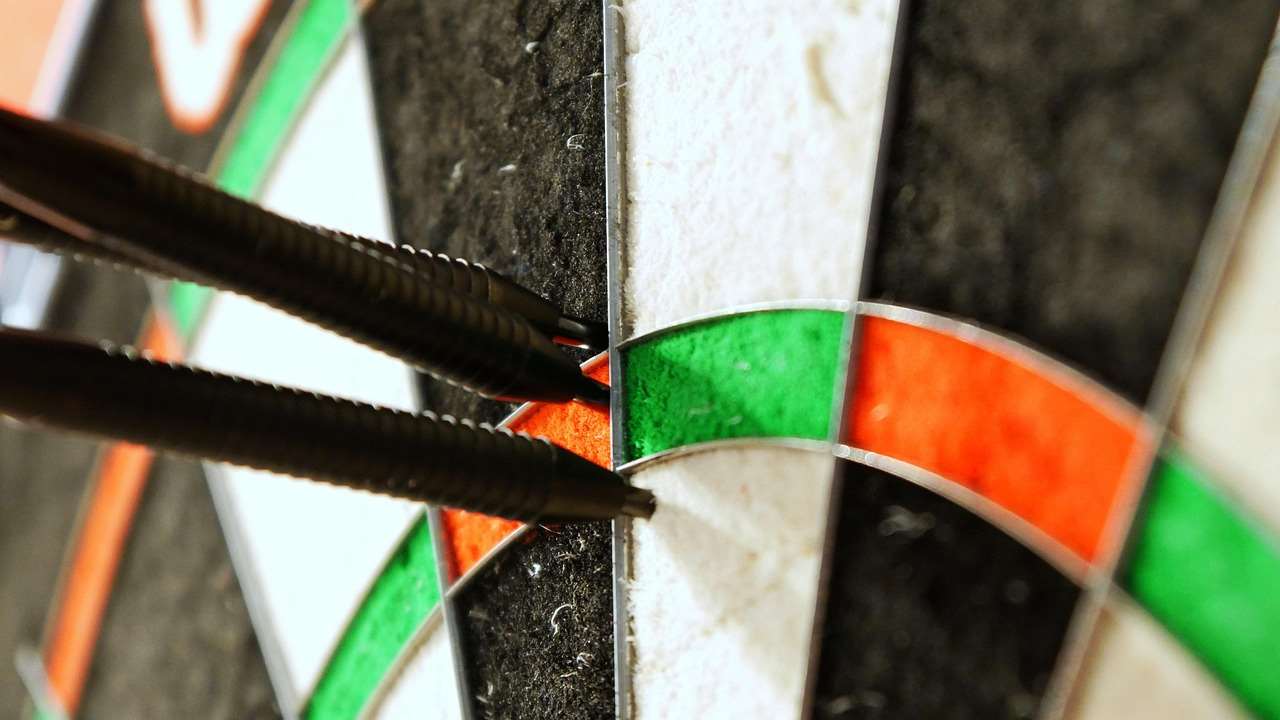
Solutions to Keep Your Darts Sticking
Now that we’ve identified the potential causes, let’s delve into practical solutions to fix a dart point that dart point won’t stay in. There are several options, ranging from simple fixes to more involved maintenance procedures.
Sharpening or Replacing Your Dart Points
The easiest and often most effective solution is to sharpen your dart points. A dart sharpener will help restore the point’s grip. Alternatively, if the points are severely damaged or worn, consider replacing them entirely. Many modern darts feature replaceable points, making this a straightforward process. Ensure you select the correct type and length of replacement points for your darts.
When sharpening, be careful not to over-sharpen, which can weaken the point and lead to breakage. A gentle sharpening to remove burrs and create a slightly roughened surface is usually sufficient. You can also purchase sandpaper especially designed to roughen your dart points, which is safer than using a sharpener to give the point more to grip.
Straightening Bent Dart Points
If you notice a bend in your dart point, carefully straighten it using pliers or a dedicated dart point straightening tool. Be gentle to avoid snapping the point. A slight bend can significantly impact the dart’s trajectory and ability to stick in the board.
Tightening Loose Dart Points
For darts with removable points, check if the points are properly tightened. Use a dart point tightening tool or pliers (covered with a cloth to prevent damage) to secure them. A loose point can wiggle upon impact, causing the dart to bounce out. If the points continue to loosen, consider using a thread-locking compound like Loctite (applied sparingly) to keep them in place. You can purchase such thread-locking products at most hardware stores.
Maintaining Your Dartboard for Better Grip
The condition of your dartboard plays a crucial role in dart retention. Regular maintenance can extend the life of your board and improve its grip. Consider these methods:
- Rotating the Dartboard: Regularly rotate your dartboard to distribute wear evenly. This will prevent certain sections from becoming overly worn and creating larger holes.
- Moisturizing the Dartboard: If your dartboard is dry, consider moisturizing it with a dartboard treatment product. This will help the sisal fibers retain their elasticity and grip.
- Repairing Damaged Sections: For minor damage, you can try gently pushing the sisal fibers back into place using a blunt tool. However, for severe damage, replacing the dartboard may be necessary.
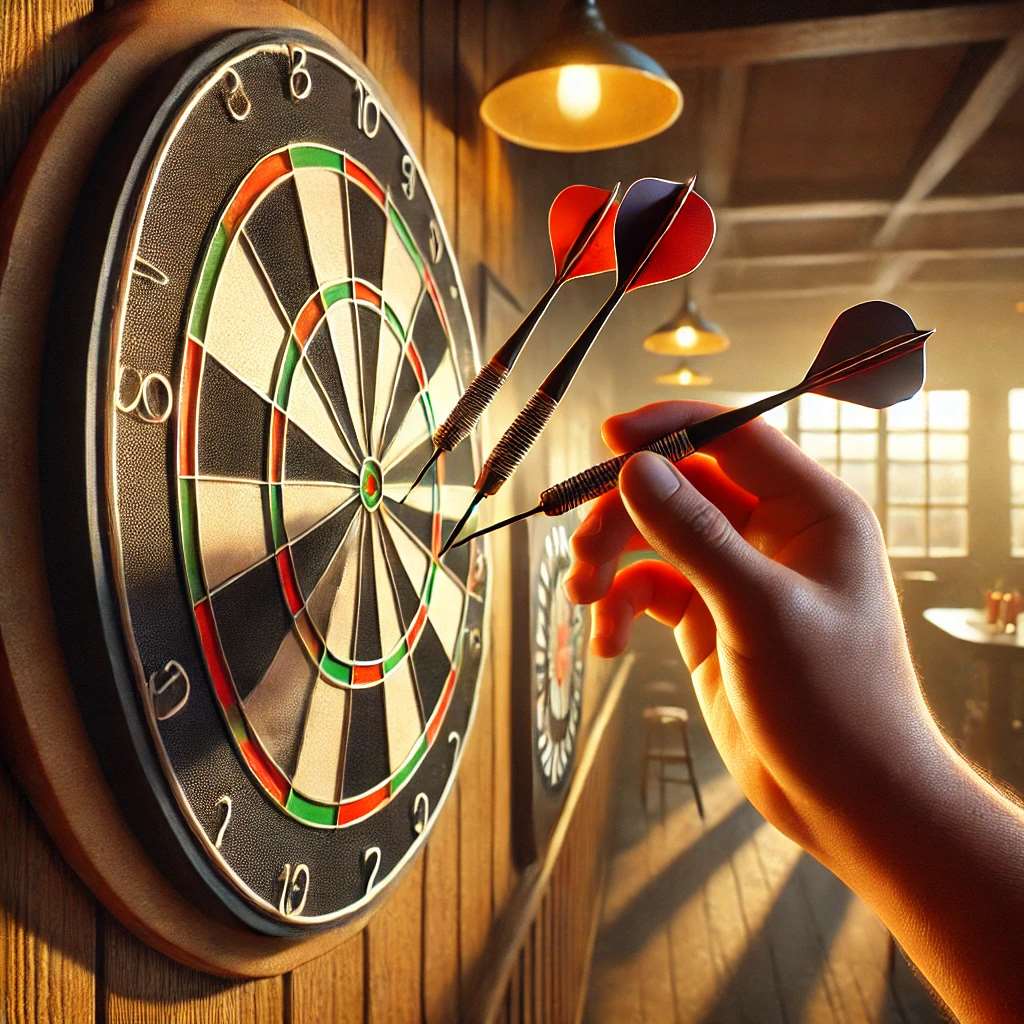
Choosing the Right Dart Points
The type of dart points you use can also influence how well your darts stick in the board. Here’s what to consider when selecting new points for your darts:
- Point Material: Steel tip darts are standard for sisal dartboards. Some points are coated with materials like titanium for added durability and grip.
- Point Length: Experiment with different point lengths to see what works best for your throwing style and dartboard. Longer points may offer better grip but can also increase the risk of bounce-outs.
- Point Texture: Some dart points have textured surfaces or grooves designed to enhance grip.
Different barrel shape darts can also affect how your darts enter the board.
Specialized Dart Points
Beyond standard steel tips, several specialized dart points cater to specific needs:
- Conversion Points: These convert soft-tip darts to steel-tip darts, allowing you to use your existing darts on sisal boards.
- Moveable Point Technology: These feature a point that retracts slightly upon impact, reducing bounce-outs.
Always check dart regulations of whatever league you may participate in to ensure that specific dart types are permitted.
Dartboard Placement and Environment
Even with the best darts and a well-maintained dartboard, improper placement or environmental factors can contribute to bounce-outs and darts falling out. Consider these factors to ensure a proper setup:
- Proper Mounting Height and Distance: Ensure the dartboard is mounted at the regulation height (center of the bullseye at 5 feet 8 inches) and that you are throwing from the correct distance (7 feet 9 1/4 inches). These measurements can drastically impact the trajectory of your dart and whether a dart point won’t stay in.
- Stable Mounting: Make sure the dartboard is securely mounted to prevent wobbling or movement during play. Use a sturdy mounting bracket and ensure it is properly attached to the wall.
- Lighting: Proper lighting can improve your aim and prevent you from inadvertently hitting worn-out sections of the board.
- Humidity: Extreme humidity can affect the dartboard’s sisal fibers, making them more prone to swelling and reducing grip. Consider using a dehumidifier in humid environments.
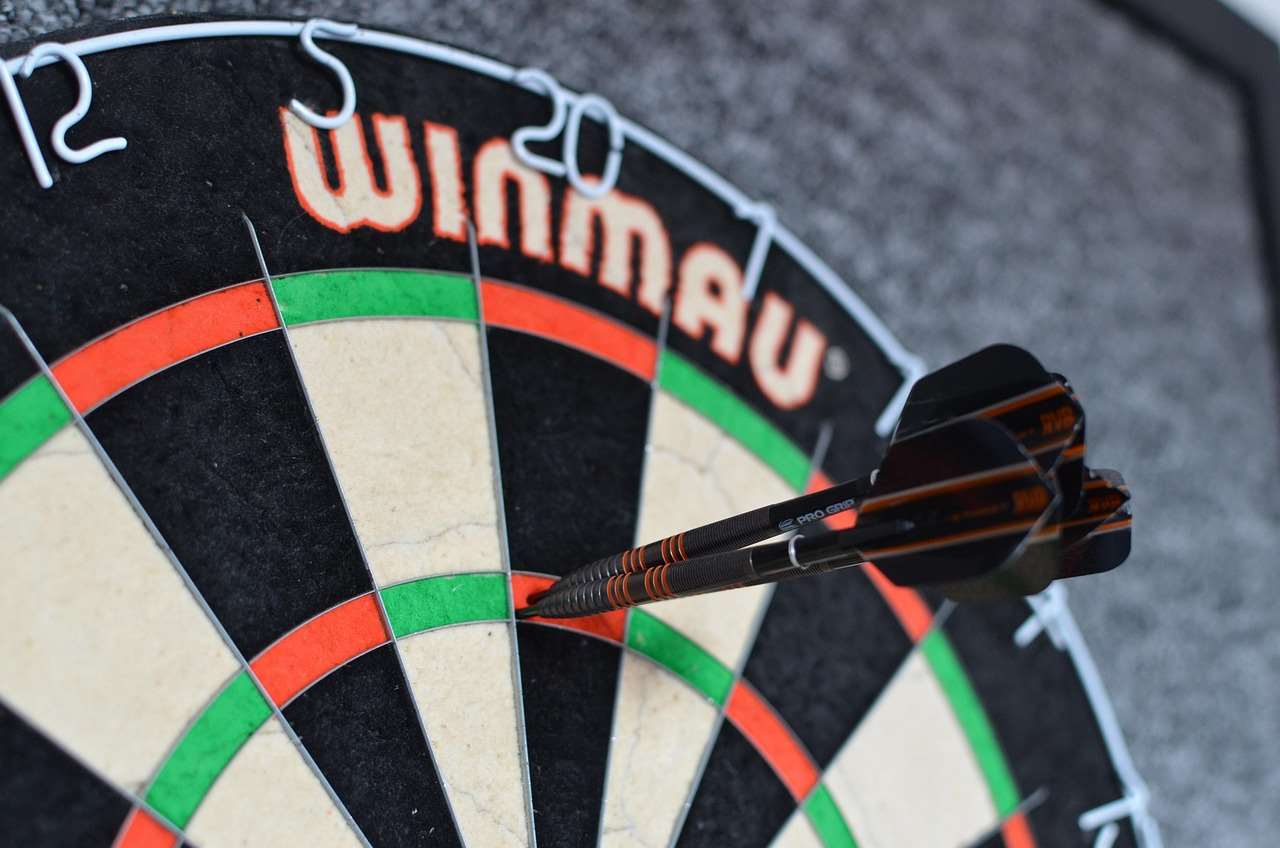
Throwing Technique and Dart Trajectory
Believe it or not, your throwing technique can influence how well your darts stick in the board. A consistent and accurate throw is key to minimizing bounce-outs and ensuring proper dart penetration. If your dart point won’t stay in, consider these tips:
- Consistent Release: Aim for a smooth and consistent release point to maintain a stable dart trajectory.
- Follow Through: Follow through with your throwing motion to ensure the dart is aimed directly at the target.
- Grip: Experiment with different grip styles to find one that provides optimal control and accuracy.
Improving your throwing form, practicing consistently, and refining your grip will all help. You may even become a darts champion!
When to Replace Your Dartboard
Despite your best efforts at maintenance, dartboards eventually wear out and need to be replaced. Here are some signs that it’s time for a new dartboard:
- Excessive Bounce-Outs: If you are experiencing frequent bounce-outs, even after sharpening your dart points and rotating the board, it’s a sign that the sisal fibers have lost their grip.
- Large Holes: If the dartboard has numerous large holes that are difficult to repair, it’s time for a replacement.
- Hardened Surface: If the dartboard surface feels hard and unresponsive, it may be dried out and unable to provide adequate grip.
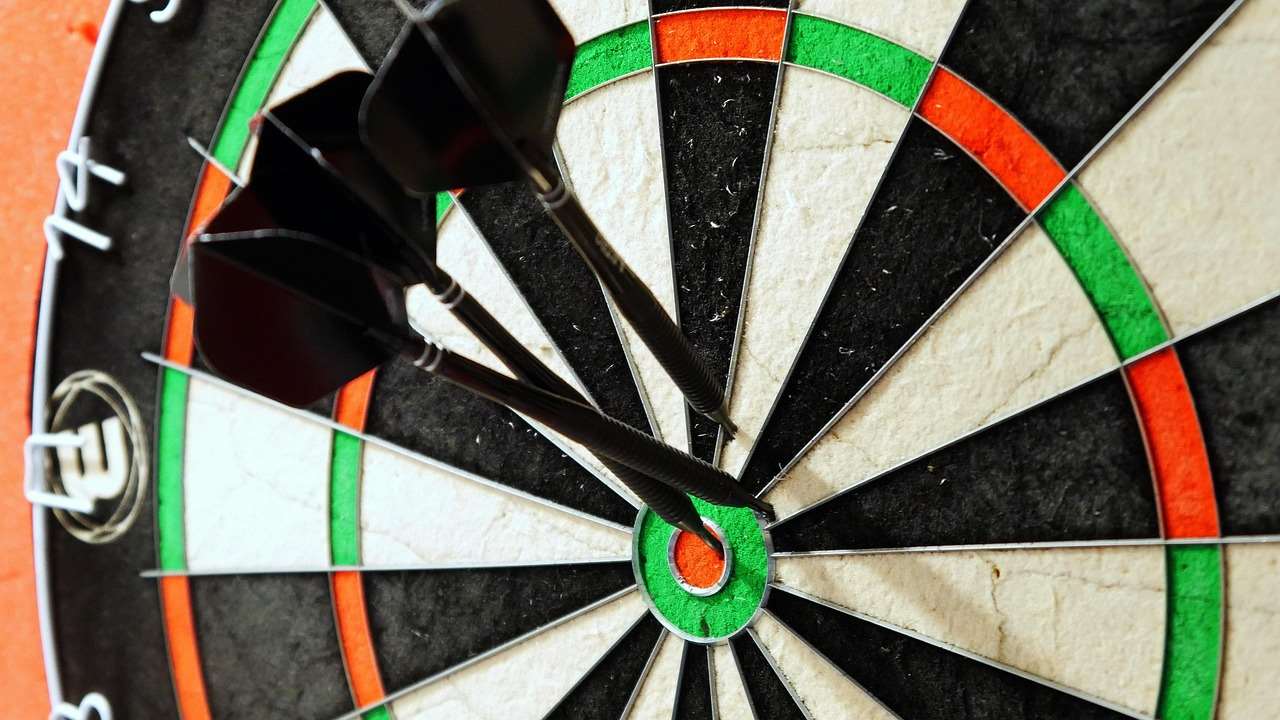
Troubleshooting Specific Dart Issues
Sometimes, the problem of the dart point won’t stay in is specific to certain darts or areas of the board. Here’s a quick troubleshooting guide:
- One Dart Keeps Bouncing Out: If only one of your darts consistently bounces out, focus on inspecting that particular dart’s point for damage or looseness. It may require a closer look or replacement.
- Darts Always Fall Out of the Same Area: If darts consistently fail to stick in a specific area of the board, even after rotating it, it’s a sign that the sisal fibers in that region are damaged or worn. That section may be beyond repair.
- Soft Tip to Steel Tip Conversion Problems: If you are using conversion points to switch from soft-tip to steel-tip darts and experiencing sticking issues, ensure the conversion points are properly installed and are compatible with your darts and dartboard.
Beyond the Basics: Customizing Your Dart Points
For serious players, customizing dart points can be a way to fine-tune their equipment and improve performance. Here are some customization options:
- Specialized Point Shapes: Experiment with different point shapes, such as tapered or grooved points, to find what provides the best grip and reduces bounce-outs for your throwing style.
- Point Coatings: Consider using dart points with special coatings, such as titanium or nitride, to enhance durability and grip.
- Custom Point Lengths: Some players prefer shorter or longer points based on their throwing technique and the type of dartboard they use. Experiment to find the optimal length.
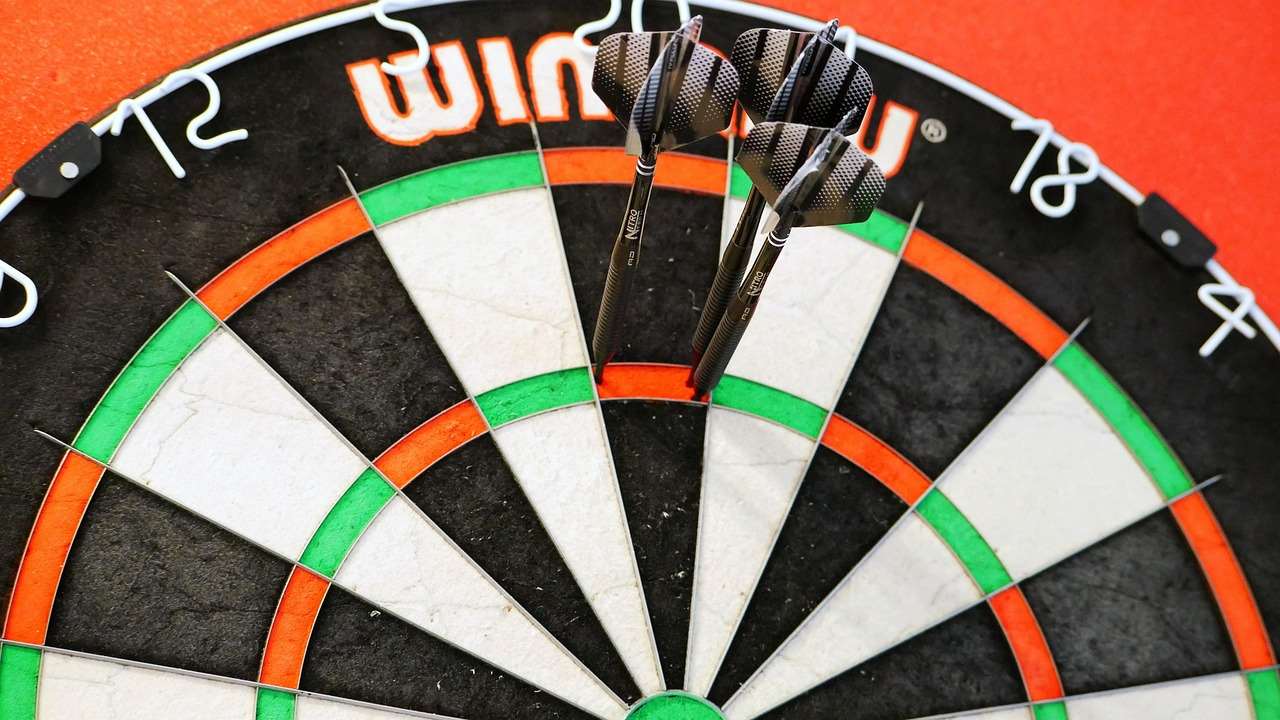
Knowing When to Call in the Pros
While many dart issues can be resolved with simple maintenance and adjustments, some situations may require professional attention. If you are unsure how to repair a damaged dartboard or replace dart points, consider consulting a dart specialist. They can provide expert advice and ensure that your equipment is properly maintained.
You can always join communities such as the Cricket darts scorer app where you’ll likely find help.
Conclusion
Dealing with a dart point won’t stay in can be frustrating, but understanding the common causes and implementing the right solutions can significantly improve your darts experience. Remember to regularly maintain your darts and dartboard, choose the right equipment, and refine your throwing technique. By following these tips, you’ll be well on your way to hitting your targets with greater accuracy and consistency. If you’re still experiencing issues, don’t hesitate to seek professional help. Now go out there, practice, and enjoy the game!
Hi, I’m Dieter, and I created Dartcounter (Dartcounterapp.com). My motivation wasn’t being a darts expert – quite the opposite! When I first started playing, I loved the game but found keeping accurate scores and tracking stats difficult and distracting.
I figured I couldn’t be the only one struggling with this. So, I decided to build a solution: an easy-to-use application that everyone, no matter their experience level, could use to manage scoring effortlessly.
My goal for Dartcounter was simple: let the app handle the numbers – the scoring, the averages, the stats, even checkout suggestions – so players could focus purely on their throw and enjoying the game. It began as a way to solve my own beginner’s problem, and I’m thrilled it has grown into a helpful tool for the wider darts community.